Missouri citizens generate about six million scrap tires a year, or about one per person per year. Just what is a scrap tire? A scrap tire is a tire that can that can no longer be used as it was originally designed to be used, it has sat out in the elements for over a year, has been cut up in some fashion or someone has placed it somewhere just to be rid of it.
An environment free of scrap tires is important to the public health of all Missouri citizens. Why? Scrap tires can become homes for mosquitoes, snakes and other vermin. Mosquitoes breed in the stagnant water that collects inside tires. Because diseases transmitted by mosquitoes can be a serious health threat, removing and properly managing scrap tires is a priority in Missouri.
Do NOT burn them! It is illegal to burn tires in Missouri, except at facilities approved by the department. Uncontrolled tire burning can pollute our air, water and groundwater.
Some options for properly disposing of scrap tires are:
 For more information about this reimbursement program, visit Scrap Tire Cleanups by Non-Profit Groups.
For more information about this reimbursement program, visit Scrap Tire Cleanups by Non-Profit Groups.By 1990, illegal scrap tire piles had become so large and widespread in Missouri that the State Legislature passed Senate Bill 530. This legislation acknowledged scrap tires as a significant waste stream in the state and established a scrap tire fee to fund the Missouri Department of Natural Resources' scrap tire oversight and management activities, scrap tire cleanups by non-profit groups, educational programs/ curriculum about solid waste management and scrap tire surface material grants. The 50-cent scrap tire fee is applied to the retail sale of every new tire.
Scrap tire shredding at the Bishop Tire Site, 2006.From 2006 until 2018, the department conducted a scrap tire cleanup program called the Scrap Tire Roundup. The department partnered with the Missouri Department of Corrections to cleanup tire dump sites containing between 500 to 10,000 tires. Due to the economic feasibility of conducting these cleanups, the department shifted its focus from conducting tire cleanups to encouraging and supporting the development of alternative, beneficial uses for scrap tires. The department uses the funds generated by the scrap tire fees to create economic incentives for properly managing scrap tires in Missouri. The department also educates individuals and businesses and strives to maintain a level playing field for all industry members through permitting scrap tire processors, inspecting scrap tire businesses and taking enforcement actions as needed. For general information about managing scrap tires, visit Management of Scrap Tires - PUB2056.
Due to the economic feasibility of conducting these cleanups, the department shifted its focus from conducting tire cleanups to encouraging and supporting the development of alternative, beneficial uses for scrap tires. The department uses the funds generated by the scrap tire fees to create economic incentives for properly managing scrap tires in Missouri. The department also educates individuals and businesses and strives to maintain a level playing field for all industry members through permitting scrap tire processors, inspecting scrap tire businesses and taking enforcement actions as needed. For general information about managing scrap tires, visit Management of Scrap Tires - PUB2056.
Since authorization and funding began in 1990 -
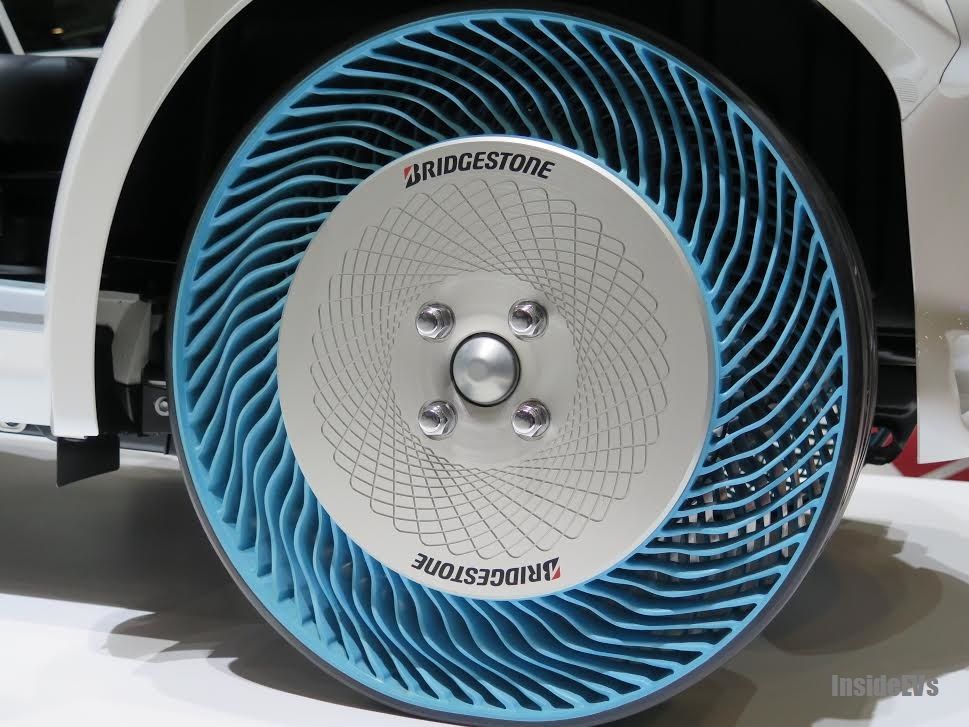
For more information about scrap tires, visit Scrap Tire Guidance Documents and Fact Sheets.
Disposing of Tires from Your Home or Private Property Information for households and property owners about disposing of unwanted or abandoned tires. https://www.tceq.texas.gov/permitting/waste_permits/tires/tires-disposal-qa https://www.tceq.texas.gov/@@site-logo/TCEQ-logo-header.png
https://www.tceq.texas.gov/permitting/waste_permits/tires/tires-disposal-qa https://www.tceq.texas.gov/@@site-logo/TCEQ-logo-header.png
Information for households and property owners about disposing of unwanted or abandoned tires.
On this page:
You may be able to dispose of your own used or scrap tires during a bulky trash collection event sponsored by your local government. A landfill may accept your tires directly, but will usually charge a fee.
A landfill may accept your tires directly, but will usually charge a fee.
Use the municipal solid waste facility map viewer to find landfill locations and phone numbers. Contact the landfill to confirm that it accepts tires for processing or disposal. If you have many tires, you may need to hire a scrap tire transporter to pick them up and haul them to an authorized scrap tire storage, processing, or disposal facility.
To report abandoned tires, you can contact local city or county authorities, contact the TCEQ field office for your region, or file a complaint online with the TCEQ.
If there are just a few tires, you may be able to dispose of them during a bulky trash collection event sponsored by your local government, or take them to your local landfill. Use the municipal solid waste facility map viewer to find landfill locations and phone numbers. Contact the landfill to confirm that it accepts tires for processing or disposal. If you have many tires, you may need to hire a scrap tire transporter to pick them up and haul them to an authorized scrap tire storage, processing, or disposal facility.
Contact the landfill to confirm that it accepts tires for processing or disposal. If you have many tires, you may need to hire a scrap tire transporter to pick them up and haul them to an authorized scrap tire storage, processing, or disposal facility.
Follow this link to download a list of Active Used and Scrap Tire Handlers and Facilities in Texas.
Visit our Reporting Abandoned Tires page.
Requirements (statutes and rules) for the management of used or scrap tires can be found online in Texas Health and Safety Code 361.112 361.1125 30 TAC 328, Subchapter F
Please contact the Scrap Tire Program if you have other questions about disposing of tires.
The problem of car tires that have served their useful life is acute in all countries.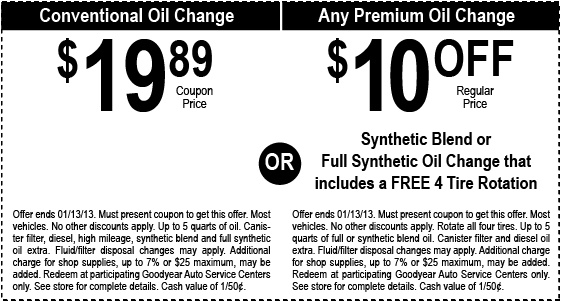 The average period of operation of such products is 6-10 years, after which they must be changed. More than 25 million tons of such waste are generated annually in the world.
The average period of operation of such products is 6-10 years, after which they must be changed. More than 25 million tons of such waste are generated annually in the world.
Since modern rubber has a complex composition and includes a metal cord, the wheels do not decompose in landfills. When stored or incinerated, they pose a threat to the environment. It is ecologically and economically correct to get rid of them - to recycle.
When choosing a recycling method, it is important to take into account the productivity of the line and the speed of the process, the energy consumption of the technology and the quality of the resulting product, and the presence of toxic emissions during processing.
Many do not know where to donate tires not for free so that they can earn money. Now almost every city has special points. Reception of worn tires is carried out every day. Where to drive up in the future to hand over waste can be found on the Internet.
Shredded old rubber tires
The safest way to dispose of tires is to grind them with further use of the resulting crumb, which is also called granulate, semolina. You can hand over unusable tires at special collection points.
This technology, in comparison with pyrolysis (obtaining fuel oil from tires), has a number of advantages:
Disadvantages of grinding car tires are the need for special and rather expensive equipment, as well as energy consumption. The most common methods are mechanical and shock-wave grinding of waste. Each of them has its own nuances.
This waste disposal technology involves cooling raw materials to ultra-low temperatures in cryogenic chambers. Before the tires are disposed of, they are removed from the collection points and frozen to -80 degrees, after which the rubber is crushed by a shock wave in an armored chamber. It is produced by explosives or generated electronically. Crushing occurring in a closed system, where the shock wave circulates, involves only 2-3 technological stages. The output is a crushed mixture of rubber, steel and textile cord. Further separation takes place on the separator system.
Before the tires are disposed of, they are removed from the collection points and frozen to -80 degrees, after which the rubber is crushed by a shock wave in an armored chamber. It is produced by explosives or generated electronically. Crushing occurring in a closed system, where the shock wave circulates, involves only 2-3 technological stages. The output is a crushed mixture of rubber, steel and textile cord. Further separation takes place on the separator system.
Rubber crumb separator
Shock wave technology has a number of advantages:

But recycling car tires requires expensive equipment, including a special armored chamber for a safe explosion. This method is only suitable for large factories that dispose of a large amount of waste. It allows organizing the processing with a capacity of up to 30 thousand tons of tires from automobile wheels per year. It is also worth considering that this method imposes special requirements on the building.
This is the easiest way to recycle car tires into crumbs. Such a business using this method is popular all over the world. He brings in a lot of money.
Such a business using this method is popular all over the world. He brings in a lot of money.
Mechanical shredding of old tires
Disposal of waste that you decide to take to a collection point includes the following steps:

When automating the process, this method takes a little time, is cheaper than shock wave technology, if the crushing of waste is carried out at normal temperature. In addition to standard conditions, mechanical grinding can be carried out with preheating or cooling of the raw material, using a press or an ozone knife. In cryogenic grinding, old tires are pre-cooled with liquid nitrogen, which makes it easier to separate the textile and steel cord. But the crumb turns out to be smooth, it does not bond well with binder polymers during further processing, and equipment for disposal is expensive. The ozone knife involves the use of an allotropic modification of oxygen and the conduct of the process under normal conditions. The technology is characterized by low energy consumption, no outgassing, but equipment will be required to produce ozone.
The most common way of processing tires is mechanical grinding under normal temperature conditions.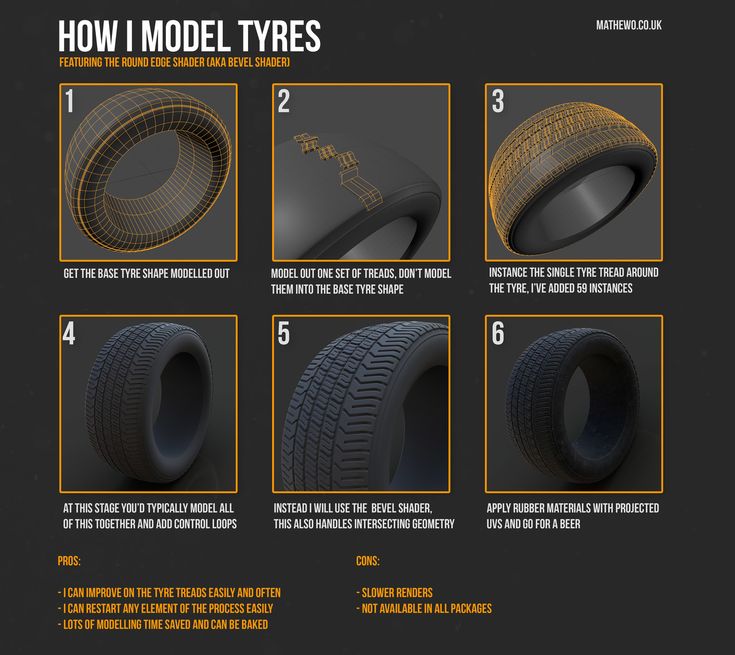
Tire Bead Remover
To obtain crumbs from the waste that the owners of the cars decided to hand over, you will need the following equipment:
 The minimum number of vibrating sieves is 2. The first vibrating sieve separates coarse crumbs, which have not yet been fully processed. The second performs fine cleaning and sorts out the conditioned granulate.
The minimum number of vibrating sieves is 2. The first vibrating sieve separates coarse crumbs, which have not yet been fully processed. The second performs fine cleaning and sorts out the conditioned granulate.
The use of this equipment makes it possible to organize the processing of old tires even in a small factory, to obtain products of different sizes at the output: from "chips" to fine dust.
With this recycling technology, there is no release of toxic compounds into the atmosphere.
Only 3-4 people are required to operate the tire recycling line, but the equipment will need to be connected to an industrial power supply to function.
The main properties of car rubber are preserved when it is crushed, so materials made from crumbs are highly durable and elastic, resistant to atmospheric factors, acid and alkali solutions. With the correct processing of old tires, the yield of granulate is about 70%. Therefore, handing over worn tires is the best solution.
Rubber crumb is widely used in various fields:

Shredded old tires are also suitable for the formation of decorative garden figurines and sculptures, the manufacture of dielectrics, substrates and packaging for the safe transportation of goods.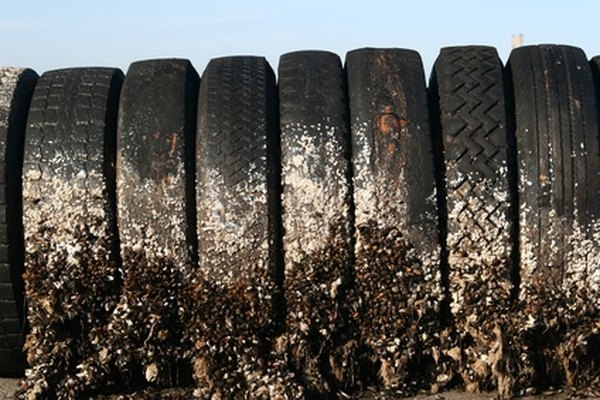 Rigid crumb in the form of granules is more often used to obtain seamless coatings. The shavings from the waste are sent to the production of pavement tiles. Fragments of a torn shape are suitable for the production of insulating materials. When arranging road surfaces, the lower layer is made of a coarse fraction (6-12 mm), and the upper one is made of fine and soft, 0.1-4 mm in size.
Rigid crumb in the form of granules is more often used to obtain seamless coatings. The shavings from the waste are sent to the production of pavement tiles. Fragments of a torn shape are suitable for the production of insulating materials. When arranging road surfaces, the lower layer is made of a coarse fraction (6-12 mm), and the upper one is made of fine and soft, 0.1-4 mm in size.
Playground surface made from recycled tires
Steel cord, which is recovered before grinding rubber tires, is sent to be melted down to produce rolled metal or to reinforce concrete structures. Its yield with proper processing is about 10%, another 8% is accounted for by the bead rings, which are sent for remelting. Textile cord can be used as a soundproofing material, filler for mats, sports equipment. Its output (fluff, threads) when recycling tires is within 10%.
Tires are one of the main and most obvious "consumables" of any car. At the same time, there are more than 42 million cars in Russia alone. With trucks and special equipment - about 59.7 million. This means that at least a million tons of used car tires are thrown into landfills every year. In this context, it is no longer a means of ensuring contact with the surface, but simply hazardous waste.
At the same time, there are more than 42 million cars in Russia alone. With trucks and special equipment - about 59.7 million. This means that at least a million tons of used car tires are thrown into landfills every year. In this context, it is no longer a means of ensuring contact with the surface, but simply hazardous waste.
Formally, automobile tires belong to IV hazard class waste, that is, low-hazard waste. But do not underestimate their danger - improperly disposed tires cause significant damage to the environment.
Under natural conditions, a discarded or buried tire takes hundreds of years to decompose. Upon contact with moisture, toxic organic compounds are washed out of them. Tires partially filled with water become breeding grounds for rats and blood-sucking insects. Millions of tires thrown into landfills are an environmental disaster in itself, even without taking into account the area occupied, therefore, over a good hundred years, mankind has developed several ways to dispose of this type of waste.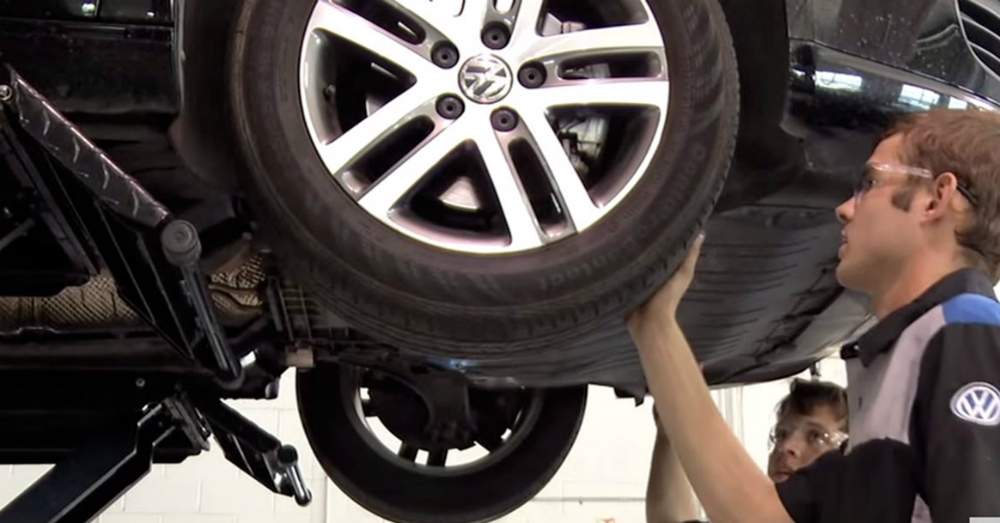
The first method involves the use of whole car tires - for example, to protect slopes from erosion, soundproof barriers along highways, and safety barriers for racing tracks. In the seventies of the last century, even artificial reefs were made from used tires! So, in 1972, the so-called Osborne Reef was created off the coast of Florida by the BARINC (Broward Artificial Reef) group with the support of Goodyear. More than two million tires were sunk to create breeding grounds for fish and oysters. The effect, unfortunately, turned out to be the opposite - the steel straps that fix the tires quickly rotted. Tires began to be thrown onto the beaches, they began to destroy neighboring coral reefs. For the last fifteen years, tires have been taken back - including with the use of army divers.
The second popular way to dispose of tires is incineration (including for energy purposes). In most cases, it is such disposal that causes maximum damage to nature and human health. The fact is that during combustion, not only zinc and sulfur oxides are emitted into the atmosphere, but also dioxins, which are classified as superecotoxicants of the 1st hazard class. These substances have mutagenic, carcinogenic and cumulative properties. In terms of toxicity, dioxins surpass almost any known poison, and, moreover, they do not decompose for decades, accumulating in the upper soil layer, as well as in all environmental objects, including plants and animals.
The fact is that during combustion, not only zinc and sulfur oxides are emitted into the atmosphere, but also dioxins, which are classified as superecotoxicants of the 1st hazard class. These substances have mutagenic, carcinogenic and cumulative properties. In terms of toxicity, dioxins surpass almost any known poison, and, moreover, they do not decompose for decades, accumulating in the upper soil layer, as well as in all environmental objects, including plants and animals.
Burning tires in high-temperature (1200-2800 degrees Celsius) furnaces of modern cement or pulp and paper plants is also not a panacea - according to many experts, with this method of disposal, dioxin emissions into the atmosphere are also present, albeit to a lesser extent. Installing highly efficient cleaning systems to trap harmful gases makes burning tires for energy unprofitable.
Another method of recycling used tires is pyrolysis. Tires are loaded into special reactors, where at high temperature in the absence of oxygen the product decomposes into components (carbon black, pyrolysis gas, as well as liquid fractions suitable for use as heating oil). The gas released during the process can also be used to produce fuel. This technology is demanding on equipment, and until recently was considered insufficiently effective. However, modern pyrolysis plants are already devoid of such shortcomings.
The gas released during the process can also be used to produce fuel. This technology is demanding on equipment, and until recently was considered insufficiently effective. However, modern pyrolysis plants are already devoid of such shortcomings.
The most cost-effective is the mechanical grinding of tires. When using this method, rubber and other polymers that make up the tire are obtained in the form of dispersed materials. The resulting crumb rubber takes on a new life in the form of various rubber products, such as car mats, speed bumps, playground surfaces, and so on. The most finely dispersed rubber crumb is used as an additive (from 5 to 20%) in the rubber compound in the production of new tires. There are several ways to mechanically shred tires based on different physical principles, such as using high impact velocities, low temperatures, or high pressures.
Despite the fact that in Russia today there are at least a few large and a large number of small plants for recycling car tires using one of the listed industrial methods, these industries are far from being fully loaded. The reason is simple - most tires are disposed of in a simple and illegal way - throwing them into a landfill or burning them.
The reason is simple - most tires are disposed of in a simple and illegal way - throwing them into a landfill or burning them.
That's why the correct disposal and recycling of tires is one of the most important priorities in protecting human health and the environment. A new project from Nokian Tires, the Nokian Eco Challenge, serves this very purpose. As part of the project, the company assumes obligations to eliminate illegal tire dumps.
The mechanics is simple - anyone can submit an application for the liquidation of a landfill, on their own behalf or from an organization. As part of the project, tire dumps with a volume of at least 10 tons are eliminated, which, in terms of tires, is about 250 truck or 1,000 passenger tires. All collected tires will be recycled.
By the way, the Yaroslavl authorities came up with a similar initiative almost simultaneously. So, at the Skokovo landfill near Yaroslavl, a plant for crushing waste and recycling old tires is to be built this year.